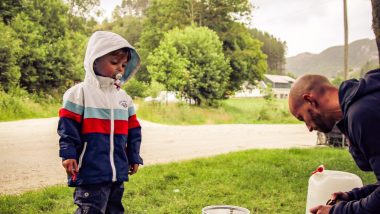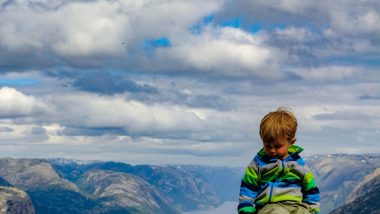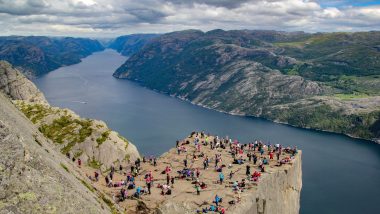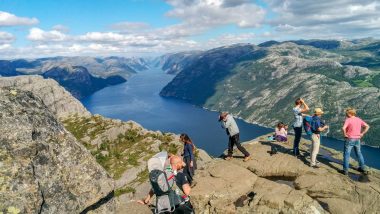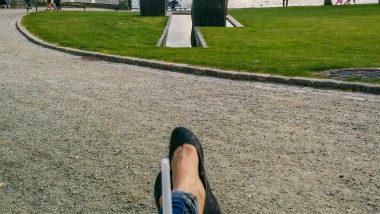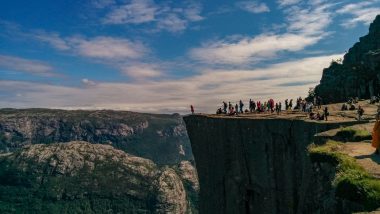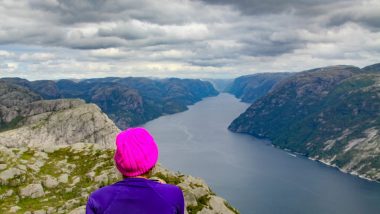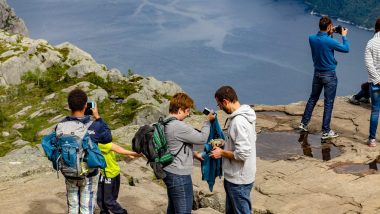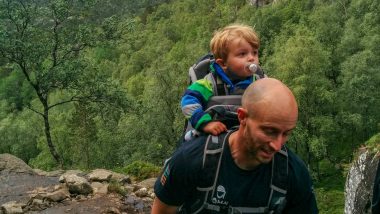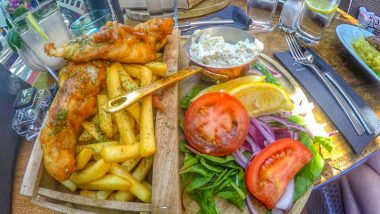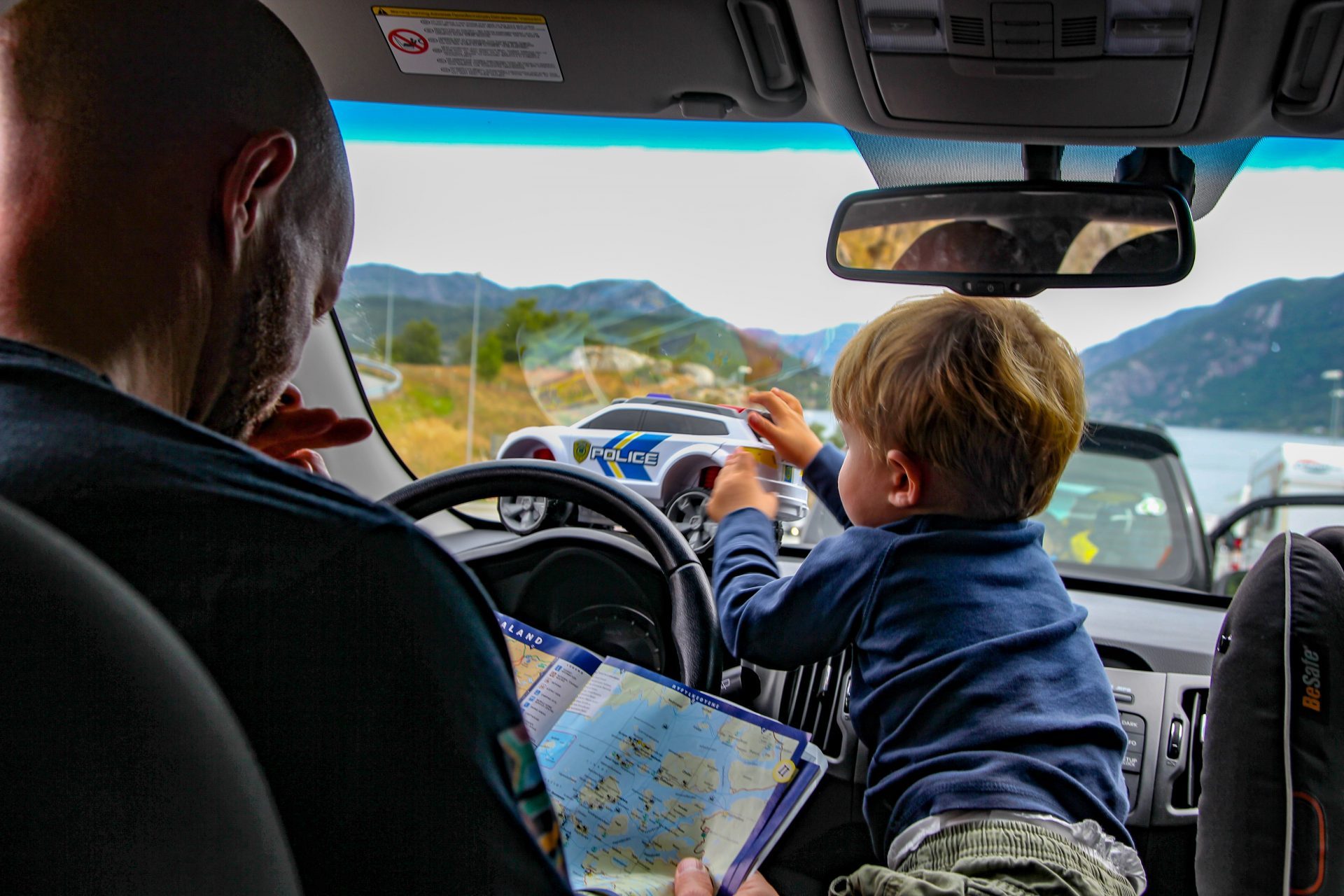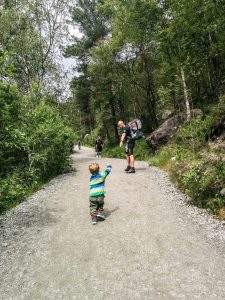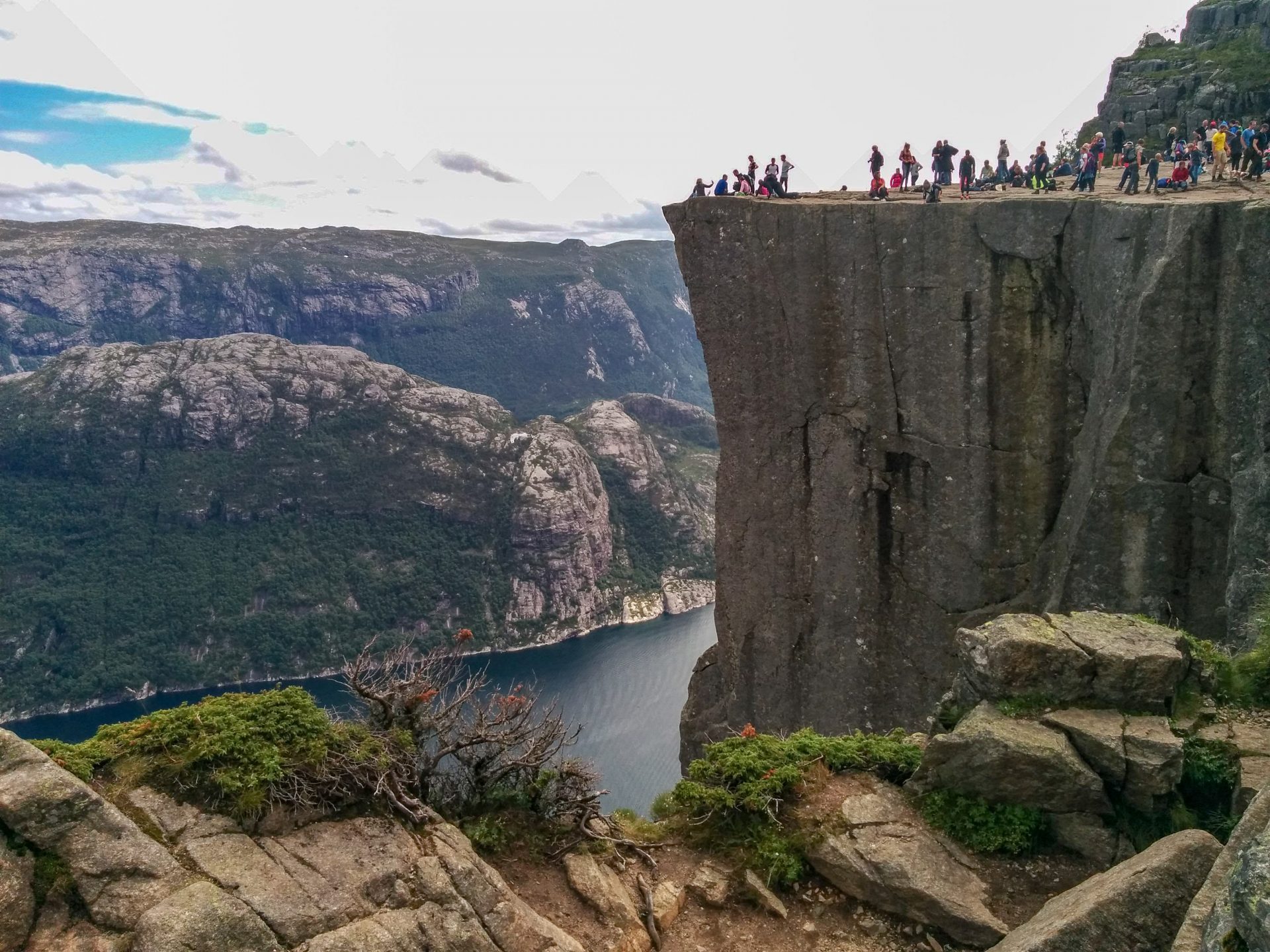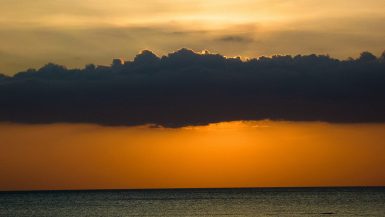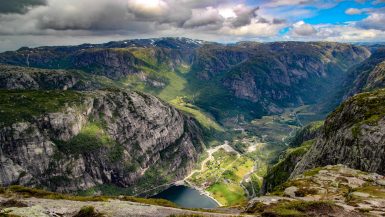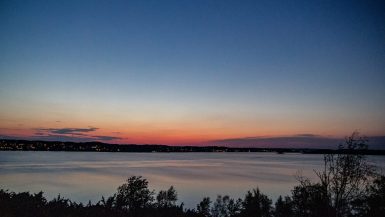Local beauty
Having amazing travel experiences does not necessarily mean that you have to travel far far away.
For many years we did just that – travelled to the other side of the world, to all kinds of exciting and exotic places. It was fantastic of course, but on this trip we decided to stay at home, or very close to home anyway.
The thing is, we have some breathtaking destinations just in our own backyard.
Visiting the neighbor
 Not only is Norway one of the wealthiest countries in the world due to its rich natural resources.
Not only is Norway one of the wealthiest countries in the world due to its rich natural resources.
It is also the home of the Nobel Peace Price and the nation that has taken more medals than any other country in the winter Olympics. (Considering the fact that Norway only has a population of 5,2 million that is a pretty impressive achievement.)
But the Norwegian superiority does not end there.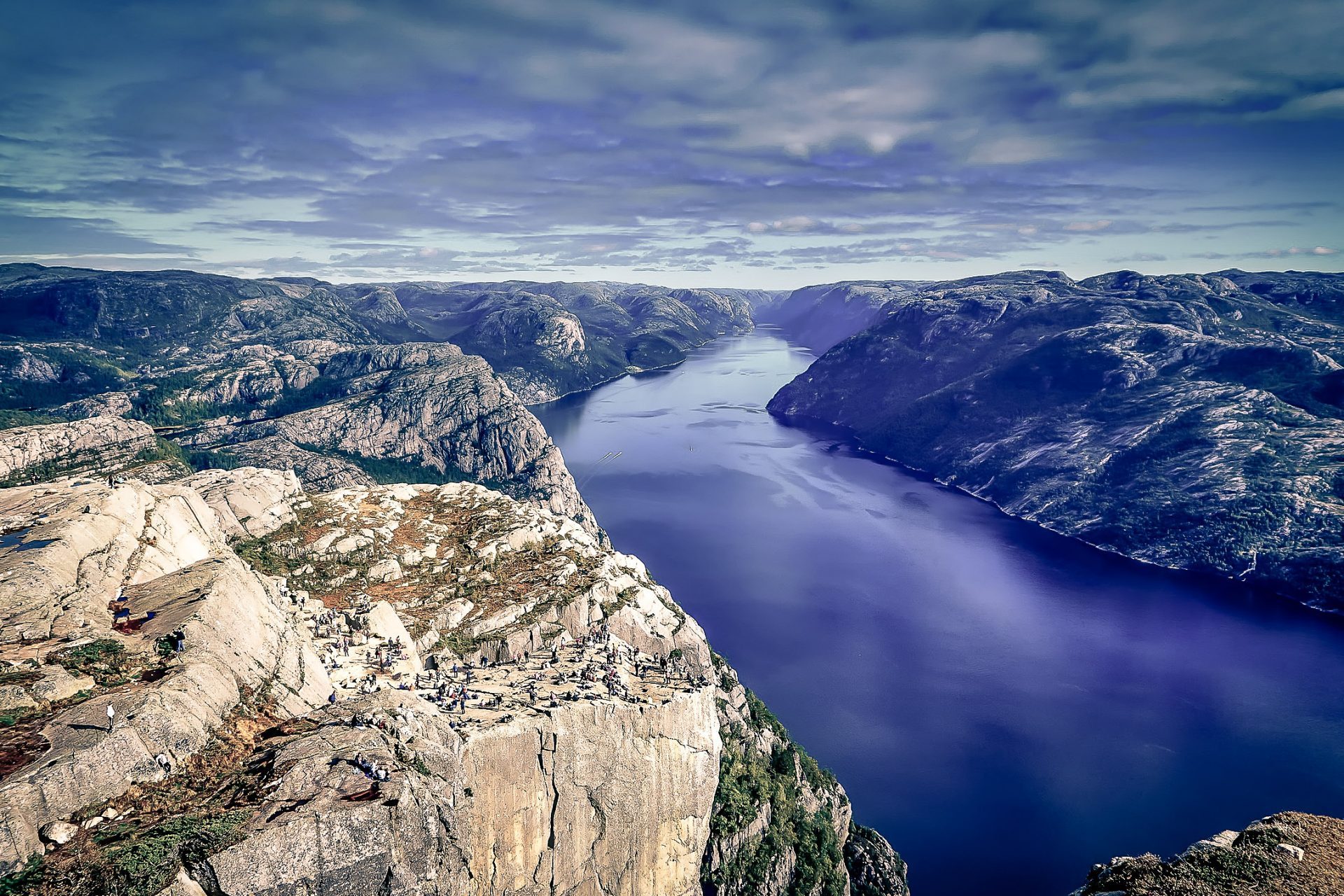
Furthermore, Norway has the highest concentration of Fjords in the world. And boy how beautiful and stunning some of those fjords are!
Fjordlands
The Norwegian border is only a 1,5 hours’ drive from us. Add an extra six or seven hours in the car and you will end up in the Fjordlands of Southwestern Norway.
We decided to go to the picturesque town of Stavanger and use that as a base. From there we would take day-trips to the magnificent viewpoints of Preikestolen (Pulpit Rock) and Kjeragbolten.
Why wait so long?
 First and foremost, Norway is the 4th most expensive country in the world. It can be freaking expensive!
First and foremost, Norway is the 4th most expensive country in the world. It can be freaking expensive!
Do not be surprised if a normal pizza or a burger will cost you approximately 150-200 Norwegian Krona, which is about 15-20 USD! Some prices are just insane…
There are cheaper places
South East Asia, for example, is completely in another dimension pricewise.
Backpacking on a budget in Asia means that you quite easily can stay 3-6 months there without having to spend a fortune. (And we like our looong holidays.)
Travelling in Norway is a different ball game. BUT, that does not by any means mean that you should give it a pass.
Cut down the major costs
Accommodation and food.
Those are the top-two things that will cost you money when travelling in most countries.
Was there a good way to save money on living and eating?
Yes, there was.
First of all – we had a car. With a roof box. Thus, no need to bring all our belongings in a single backpack this time.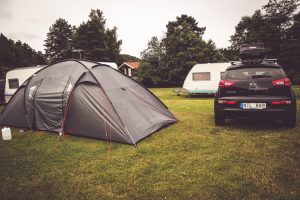
We bought ourselves a humongous and awsome tent from Primus. The cost was the same as two-three nights in a normal Norwegian hotel room.
Secondly, we brought a lot of food from Sweden. That saved us another 25% on expenses.
Third and final question. How could we save some money on all the upcoming Norwegian attractions?
Then we suddenly realized the obvious – the views in Norway, they are for free!
And off we went!
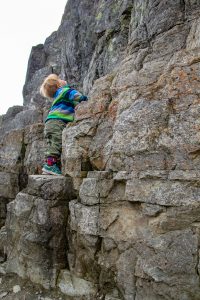 Leo was only two years old at this time. Even so, we took our chances that he would be enduring enough to go on a longer hike. He turned out to be a real trekking champ…
Leo was only two years old at this time. Even so, we took our chances that he would be enduring enough to go on a longer hike. He turned out to be a real trekking champ…
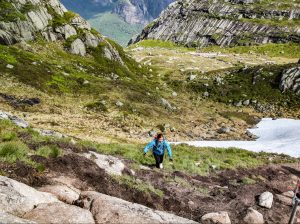 On this trip we also got accompanied by our lovely little Malaysian friend Aiesha, whom we met a couple of years earlier while exploring Borneo.
On this trip we also got accompanied by our lovely little Malaysian friend Aiesha, whom we met a couple of years earlier while exploring Borneo.
She had flown across half the world in the belief that she would experience the fantastic Scandinavian summer that we had talked about so many times.
Mother Earth, on the contrary, had other plans…
From Sweden to Norway
 Taking the ferry is a quick and convenient way of getting to Norway. Several ferries operate daily between Strömstad in Sweden and Sandefjord on the Norwegian side.
Taking the ferry is a quick and convenient way of getting to Norway. Several ferries operate daily between Strömstad in Sweden and Sandefjord on the Norwegian side.
As the Swedish West Coast is particularly beautiful in the summertime we spent a day exploring Strömstad and its surroundings before we got on the ferry.
The cross-over takes about 2,5 hours and gives you lovely views of the coastal archipelago.
 On the ferry you will have the opportunity to grab a meal and do some last minute tax-free shopping before arriving in Sandefjord.
On the ferry you will have the opportunity to grab a meal and do some last minute tax-free shopping before arriving in Sandefjord.
Surprisingly long drive
It felt like forever driving from Sandefjord to Stavanger. Even though the distance looks quite short when looking at a map, the actual drive took close to seven hours. (Including a few shorter stops along the way.)
When we finally found the campsite and got our tent up it was already late in the evening. We made a quick pasta sauce dinner on the Trangia stove, inside the tent.
Forty-five minutes later the food was gone, everyone’s teeth were brushed and we all crashed into bed.
How to get to Preikestolen (Pulpit Rock/Preacher Chair)
Depending how you choose to travel there are different ways of getting to Preikestolen from Stavanger.
The most common way is to either go by bus or by car, but you can also take the boat. OR you can do a combo trip that includes both the boat ride and the bus if you go with a tour operator.
Ferry
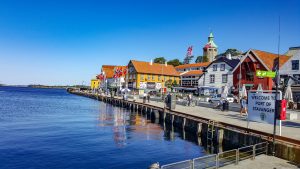 From Stavanger you can take the car ferry to Tau. The ferry departs from the harbor (Fiskepirterminalen) every 40 minutes or so, and the trip across takes about 35-40 minutes. You can only buy tickets on the ferry, there are no online reservations.
From Stavanger you can take the car ferry to Tau. The ferry departs from the harbor (Fiskepirterminalen) every 40 minutes or so, and the trip across takes about 35-40 minutes. You can only buy tickets on the ferry, there are no online reservations.
During the summer high season there are several daily buses that connects Tau with the Preikestolen Mountain Lodge that is the starting point of the trek.
If you choose to come here during the low season you will need to take a taxi from Tau as the buses only are available from April-September.
Car
We choose the south route via the RV13 to the wharf in Lauvvik.
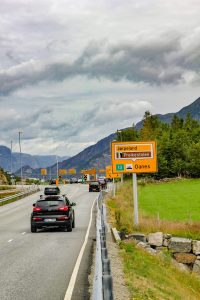 The ferry crossing from Lauvvik to Oanes runs all year-round and only takes 8 minutes.
The ferry crossing from Lauvvik to Oanes runs all year-round and only takes 8 minutes.
From Oanes it is only a short 20-30 minute drive to the Preikestolen parking lot.
Preikestolen aka “the Pulpit Rock”
Preikestolen is one massive cliff of granite that towers 604 meters over the Lysefjord far below.
During the last couple of years the number of tourists coming to visit Preikestolen has increased dramatically.
This sudden boom of visitors most likely is because of an increased social media coverage and a famous movie or two.
Impact of tourism
This increase is not necessarily a good thing.
Not only is there a big risk that that the spike in tourists will affect the surrounding nature in a negative way.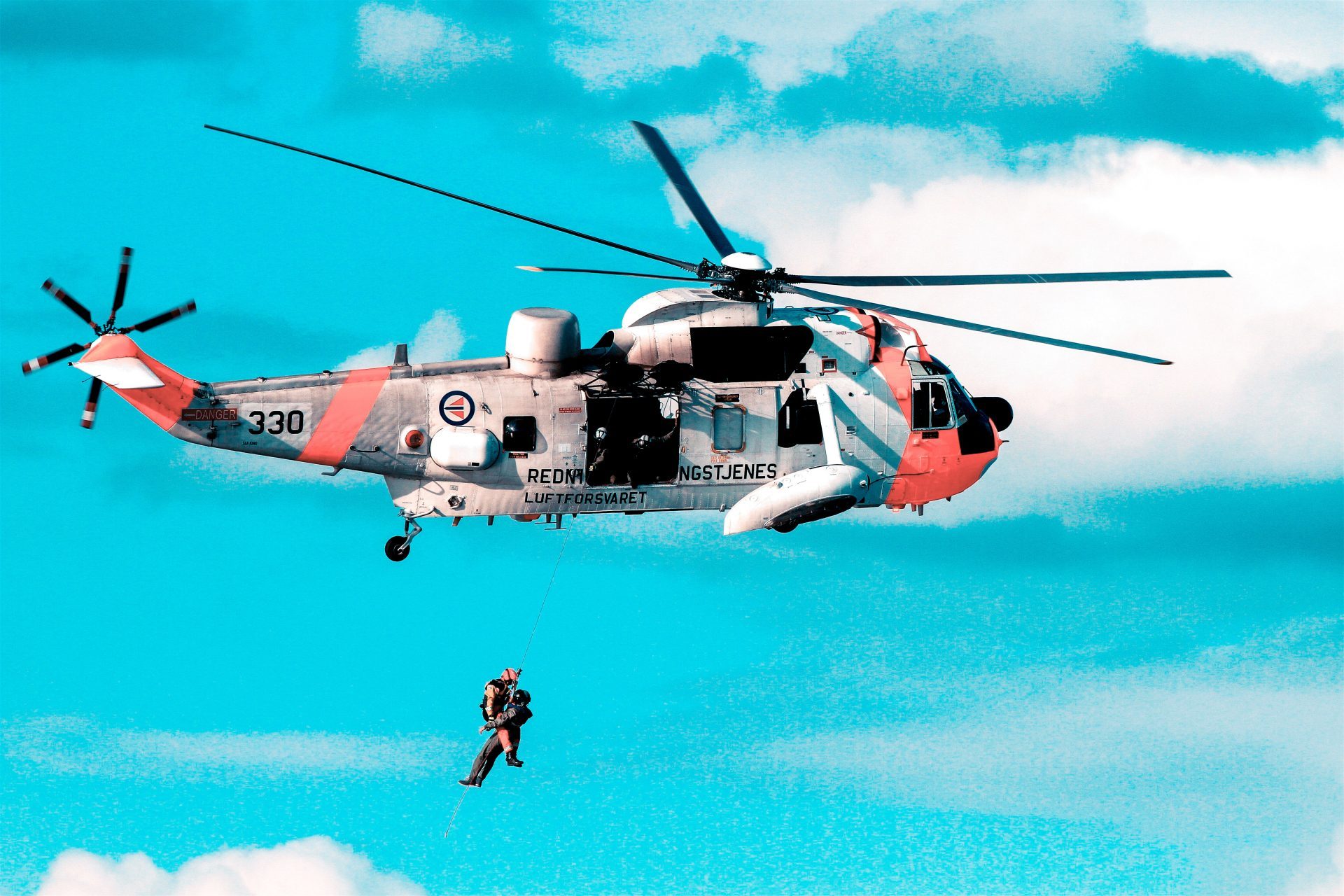
Many of the people visiting Preikestolen and its surroundings also come ill-prepared and each year the number of emergency rescues grows.
How hard is the trek?
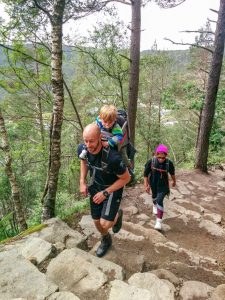 I would classify the trek as semi-easy for a normally fit person. The round trip should take about 4-5 hours. This only includes the trek itself and not the time spent on the top.
I would classify the trek as semi-easy for a normally fit person. The round trip should take about 4-5 hours. This only includes the trek itself and not the time spent on the top.
The starting point is at an elevation of 270 metres (890 ft) and the total length, one-way, is 3,8 km (2,4 mi).
That might not sound like a lot, but you have to be beware of the terrain.
Some parts are rather steep and the trail runs up and down. After a while you will start to feel that nice burning sensation in your thighs.
Diverse landscape
As you start gaining some altitude the landscape around you slowly start to change.
Crooked mountain birches, pine trees and all those big steps made of large stones and boulders are gradually replaced by more open air.
Gravel paths turns into hard rock and the trees become fewer and shorter.
Lysefjorden
When you get even higher up, the plateau flattens out and the walking gets easier.
After passing some tiny lakes you will start to see the wonderful views of Lysefjorden and the surrounding highlands in front of you. Follow the marked trail that lingers up along the outside of the mountain side.
Soon you will spot the distinctive characteristics of the vertical wall that is Preikestolen.
The feeling when looking out on this massive stone platform made by nature was both a bit breathtaking and exiting.
Fivefold increase
In only 10 years the number of visitors to Preikestolen has increased from 60 000 per year to over 300 000. That means that you will not be alone up there during high season unless you to start the hike very early in the morning or stay the night up there in a tent.
The shot
Getting that exceptional, cool photo is not as easy as it seems. And the more extreme it is, the cooler it gets. But how far should one go get that perfect shot?
Preikestolen nowadays, during high season, is crowded! And there are no safety rails to hold on to out there on the cliff. You fall down, you are no more. As simple as that.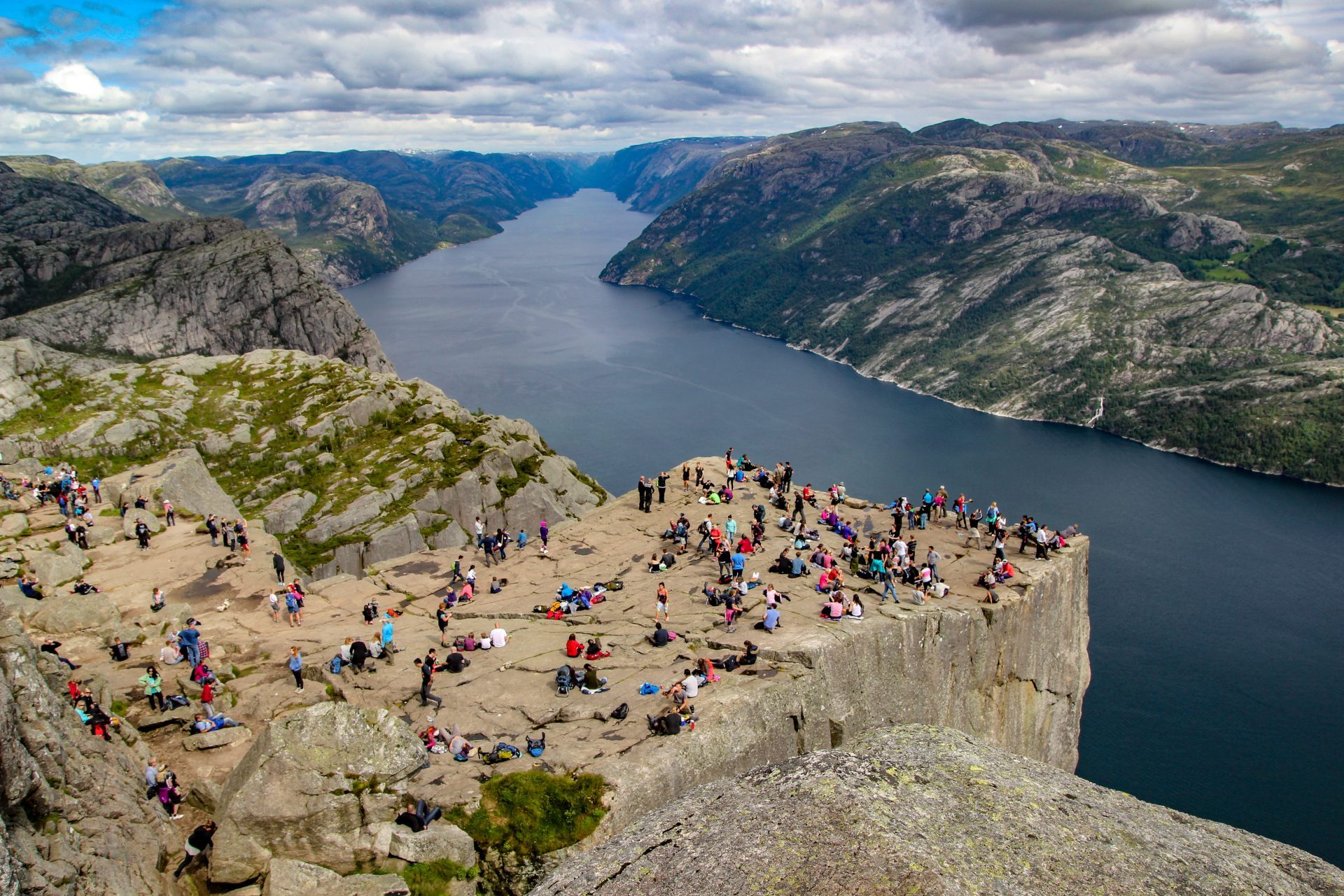
Even so – a lot of people choose to sit with their feet dangling off the edge of the cliff just because they want that special photo.
I love extraordinary photos, I really do. Nonetheless, doing it here is just pure stupidity if you ask me. Sure, clearly I am a bit of a wimp. What could possibly go wrong on a crowded place like this?
Enjoying the rest
Leo thought it was nice to get out of his carrier for a while to stretch his legs.
This, though, required some serious parental supervision. Having a two year old walking around on his own up here was not a good option.
Because Preikestolen is like any of the other surrounding mountains.
There will be no safety barriers or similar up there. Just nature as it was created, and the dangers that comes with it.
After enjoying the views and a basic picninc we decided it was time to go back again. With all that crowd and the dangers of being on the side of a mountain, this was not a place for junior to walk around freely.
So we put him back in the sack and of we went.
Good hike
The hike downhill was much easier than going up and it did not take long until we were back at the Mountain Lodge and parking area again.
Junior was let loose for a while before we packed our car and went back to Stavanger the same way we came.
All in all, the hike was great. Just long and strenous enough to get that content feeling of having achieved something challenging. And it had not been too many people on the trail either.
Sure, up on the cliff it was quite crowded. But we never had that overtouristic feeling that you get in some other places, which was nice.
Expert builders
Did you know that the giant blocks of stone that make the stairway up the first part of the Preikestolen trek are made by Nepalese Sherpas?
When to go?
The best time to hike Preikestolen is April to September.
Stavanger
Stavanger was to be our home for the next two days.
“Gladmat”, Scandinavia’s biggest food festival was held at the same time which was awesome. Food from all over the world, at reasonable prices even with Norwegian standards, were served in food stands along the Vågen Harbour.
This 4-day festival attracts about 200 000 visitors each year.
Lots of things to do
Besides from being hosts to great food festivals Stavanger also has a lot of other interesting attractions.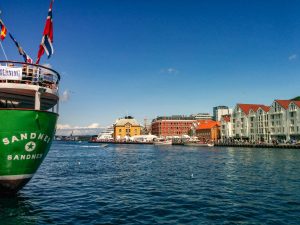
One should definitely visit the famous Petrol Museum. Here you can learn all about the oil industry and the importance it plays to Norway.
There is also a beautiful medieval cathedral, Domkirke, and a very interesting Canning museum in town. If you ever wondered how a fish ball ends up in a can. Well, this is the place to go. They will show you the whole process from start to finish.
The Canning museum is located in the middle of the old quarters of Stavanger, called Gamle Stavanger (Old Stavanger). This part of town consists of 173 old buildings that were built in the 18th century. The narrow cobblestone streets with the white wooden houses are home to numerous cafés and trendy little shops.
Preikestolen from beneath
Another very popular attraction is taking a guided Fjord cruise on Lysefjorden. The boat passes beneath Preikestolen and then keeps on going all the way to the small, isolated village of Lysebotn, at the innermost end of the fjord.
Lysebotn itself is nothing special and there are far more interesting places to visit in Norway.
Even so, more than 120 000 tourists passes through every year as Lysebotn works as a hub for hikers and base jumpers that are exploring the surrounding areas.
We went there as well, for a hike up to the famous Kjeragbolten boulder.


